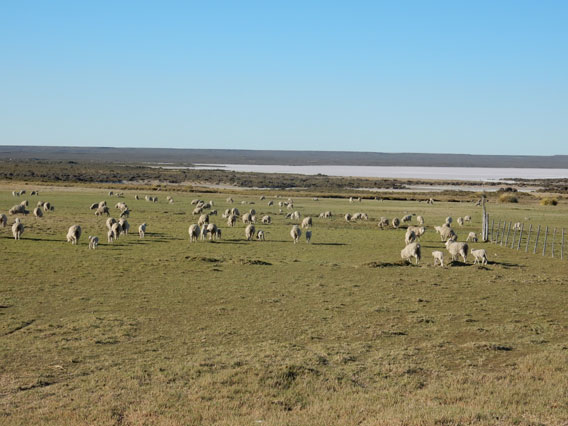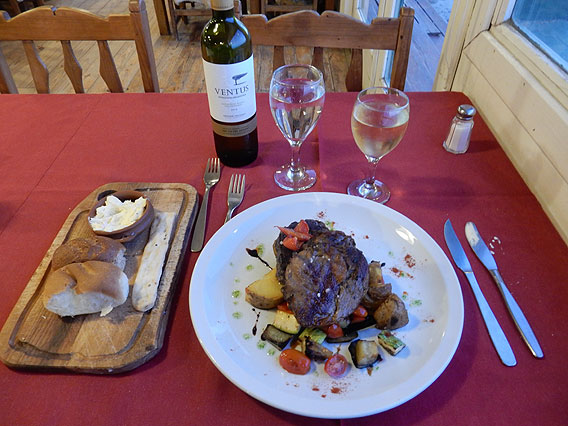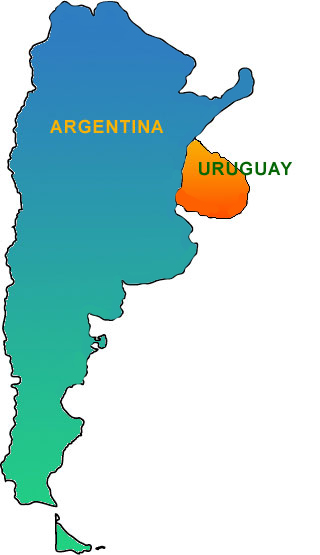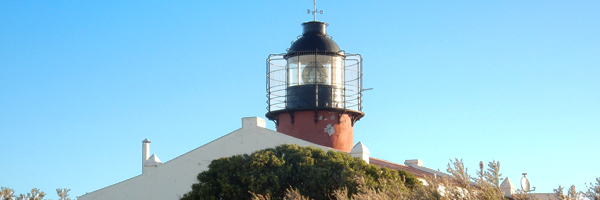Part III: Nature in its Rawest Form
Road Trip
A new phase of the journey has begun, with many new landscapes to explore. I said goodbye to my Earthwatch friends at the airport in Trelew, where I rented a car and set off for the Valdés Peninsula.
From the airport, I drove about 60 kilometers to Puerto Madryn, a relatively big city by Patagonian standards. From there I drove into a landscape that became wilder and wilder with each passing kilometer. The Valdés Peninsula juts way out into the Atlantic Ocean and is not only a national park, but also a World Heritage Site. It is a place I have dreamed of visiting for many years, a Lost World rich in wildlife, including sea lions, elephant seals, penguins, whales, and especially orcas.
I reached Puerto Pirámides, the only town on the peninsula, in late afternoon. I really wanted to get to Punta Delgada that night, at the far southeastern tip of the peninsula. I stopped at the Tourist Office in town and they were able to call the hotel for me and make sure they had a room available.

An Estancia in the interior the Valdés Peninsula
Beyond Puerto Pirámides, the pavement ends and all the roads are ripio (gravel). It's about 70 kilometers out to Punta Delgada, through a wild desert landscape populated by herds of guanacos, flocks of rheas, and lots of sheep. There are many estancias, or sheep ranches, and the sheep run free throughout the peninsula.
I reached Punta Delgada around 7:00pm and checked into the hotel, which is located on the grounds of an old lighthouse. Situated atop a high cliff, the Faro Punta Delgada was built in 1904 to help guide ships around the wild and windy shores of this remote corner of Patagonia.
As I pulled my luggage from the car, I struck up a conversation with Clara, who was sitting on a bench in the parking lot. Clara was from Trelew and works as a tour guide around the Valdés Peninsula. She spoke Spanish, English, German, and French, so she was a natural guide for visitors to this amazing place. She gave me some great tips about places to see and things to do.
After I got settled in to my room, there was still enough light outside to go for a walk around the area. The grounds of the lighthouse are lush with plants and flowers, an island of greenery among the desert landscape of the peninsula. A lone sheep grazes among the gardens, a mascota (pet) that the staff has named Carlos.
I walked around the lighthouse and found a stairway that went partly down the cliff to a platform overlooking the beaches below. Elephant seals were hauled out all along the beaches, lazily snoozing in the late afternoon springtime sun.
After my walk, it was time for dinner, so I went over to the restaurant and found a nice table looking out over the wild Patagonian landscape. I sat in this remote outpost of civilization and enjoyed a delicious dinner of bife de chorizo, mixed vegetables, homemade bread, and Patagonian wine. While most of Patagonia is cold and unsuitable for grape growing, the northern province of Neuquen produces some notable vintages. It was the perfect ending to the first day of my road trip.

Bife de Chorizo, vegetables, homemade bread, and Patagonian wine
Clara came over to my table and we looked over the map of the Valdés Peninsula. I asked her about the orcas and she told me the best time to see them was just before la marea alta, high tide. She also told me about Punta Cantor, a place overlooking the Caleta Valdés, where the orcas had been very active lately.
I went back to my room after dinner and got everything ready so I could leave early in the morning. High tide was going to be at 10:00 am and it was about an hour's drive to Punta Cantor. I also wanted to add in some buffer time to explore along the way. I knew the next day was going to be a big one.
| Next up: When Orcas Attack
|


© 2016 Michael Hanrahan